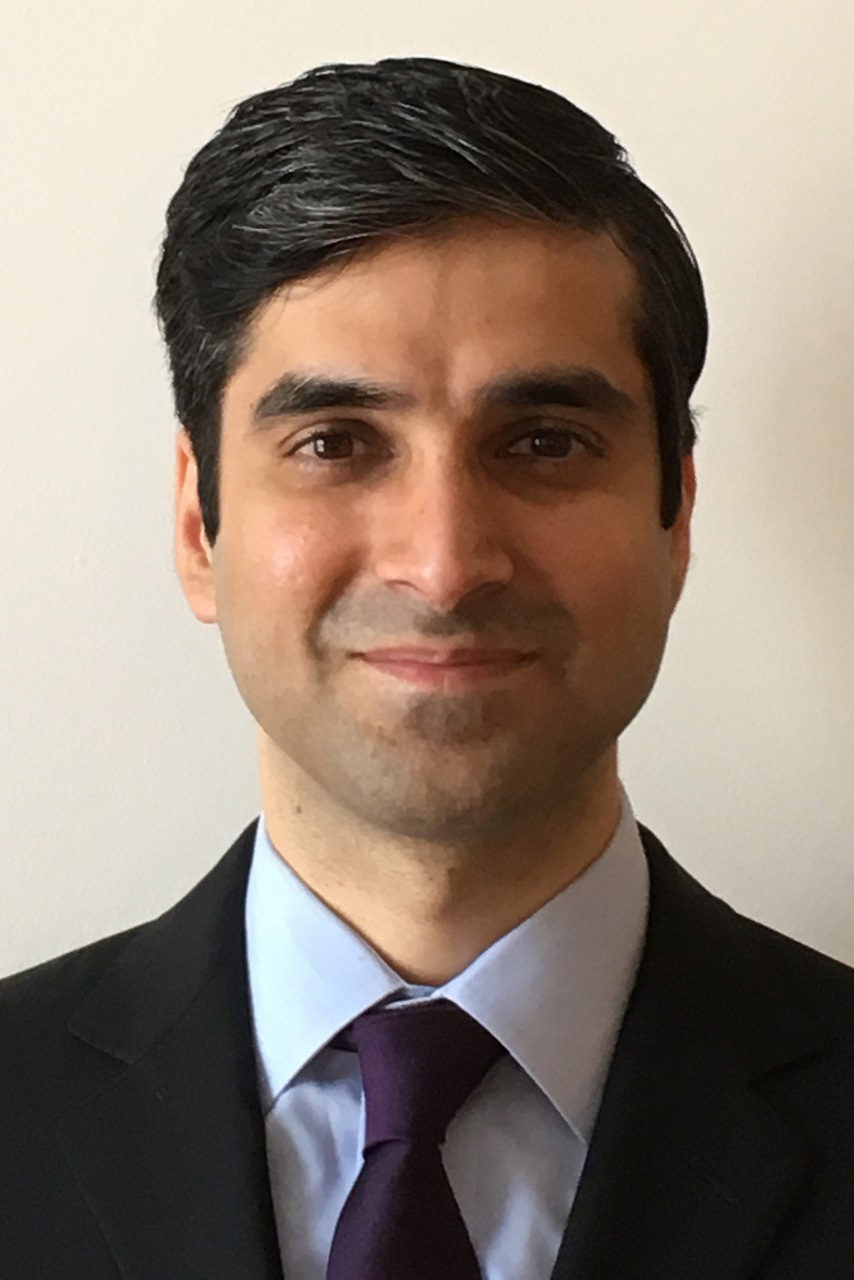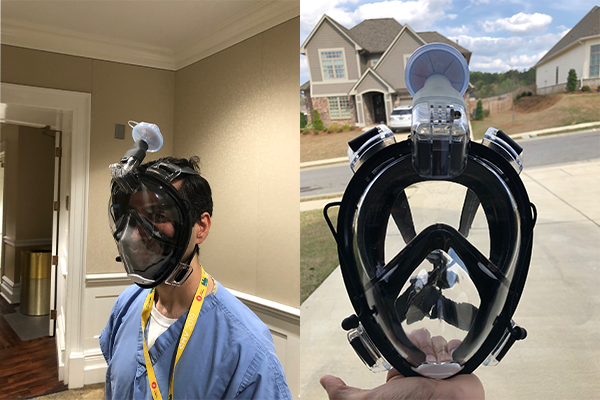 As the novel coronavirus began to spread across the United States, shortages of personal protective equipment (PPE) started to become a major concern for hospitals and healthcare professionals. In response to these potential shortages, Nitin Arora, M.D., an assistant professor in the Division of Neonatology at UAB, began to search for solutions for alternative PPE options that could be used at UAB and in Alabama. Dr. Arora had been following the COVID-19 pandemic as information began to come out in December 2019.
As the novel coronavirus began to spread across the United States, shortages of personal protective equipment (PPE) started to become a major concern for hospitals and healthcare professionals. In response to these potential shortages, Nitin Arora, M.D., an assistant professor in the Division of Neonatology at UAB, began to search for solutions for alternative PPE options that could be used at UAB and in Alabama. Dr. Arora had been following the COVID-19 pandemic as information began to come out in December 2019.
“My area of research is the vertical transmission of viral pathogens between mothers and their babies, previously I studied Zika and at present I’m studying SARS-CoV-2,” explains Dr. Arora. “Due to my research interests, I was watching very closely as the viral epidemic began to unfold and spread across Europe, I knew that once it reached America we could potentially experience a shortage of PPE. I began looking for reusable PPE solutions in case it became difficult to find traditional PPE.”
During his search, Dr. Arora found the Pneumask, a full-face respirator made from a scuba mask and a 3D printed filter invented by Manu Prakash, Ph.D., from Stanford University that has since been submitted for FDA approval. “After I discovered the work Manu and his team had done, I reached out to him about using his design to create masks for our team here at UAB,” said Dr. Arora. “He was very supportive of our efforts and asked if we would be willing to provide information about clinical testing of the masks done at UAB, and we were happy to serve as clinical contributors to the Pneumask team. After I spoke with Manu, I got started looking for collaborators for this effort.”
Dr. Arora began to search for local 3D printers to partner with to create the adapter which connects the medical-grade filter that modifies the scuba masks. He contacted Justin Koch, director of the UAB School of Engineering undergraduate design lab, who was working to create face shields for UAB medical personnel as well as other 3D printers in the greater Birmingham area. Koch connected Dr. Arora with Matthew Rosser, the director of the Center for Manufacturing Support at Jacksonville State University (JSU). Rosser and his team, spearheaded the design and manufacturing efforts of the 3D printed component.
 Dr. Arora modeling the Pneumask.“The original Pneumask that Stanford submitted to the FDA was only for one type of scuba mask,” explains Dr. Arora. “Matt and I decided to work together to design solutions for other types of scuba masks by modifying the design created by Manu’s lab.” After securing funds from the UAB Reusable PPE Solutions Taskforce to purchase various types of scuba masks, they worked to create 3D printed pieces that fit the various types of scuba masks. Once the masks had been put together, Dr. Arora presented the masks to the UAB Coronavirus Command Center and he and other healthcare providers at UAB tested the masks and shared their data with the Pneumask team. To date, more than 400 Pneumasks have been made for UAB by Dr. Arora and Rosser’s team, and Dr. Arora has secured 700 completed Pneumasks from the Pneumask team and their philanthropic partners to be sent to UAB and distributed in the region as the need arises.
Dr. Arora modeling the Pneumask.“The original Pneumask that Stanford submitted to the FDA was only for one type of scuba mask,” explains Dr. Arora. “Matt and I decided to work together to design solutions for other types of scuba masks by modifying the design created by Manu’s lab.” After securing funds from the UAB Reusable PPE Solutions Taskforce to purchase various types of scuba masks, they worked to create 3D printed pieces that fit the various types of scuba masks. Once the masks had been put together, Dr. Arora presented the masks to the UAB Coronavirus Command Center and he and other healthcare providers at UAB tested the masks and shared their data with the Pneumask team. To date, more than 400 Pneumasks have been made for UAB by Dr. Arora and Rosser’s team, and Dr. Arora has secured 700 completed Pneumasks from the Pneumask team and their philanthropic partners to be sent to UAB and distributed in the region as the need arises.
However, Dr. Arora’s efforts do not end there. During the testing and presentation of the Pneumask to the UAB Coronavirus Command Center, he was introduced to Albert Pierce, M.D., professor in the Department of Anesthesiology and Perioperative Medicine at UAB, who shared a similar passion for developing alternative solutions to PPE. Dr. Pierce was working on a solution for a half-face respirator mask and asked Dr. Arora to join him in these efforts. Dr. Arora brought Karim Budhwani, Ph.D., CEO of CerFlux, on board to help with the design and 3D printing component of modifying the mask.
“When I originally reached out to members of the 3D printing community in Birmingham, I met Dr. Budhwani who was very interested in helping create solutions for reusable PPE,” said Dr. Arora. Through their collaborative efforts they designed, tested and produced the Pierce-Arora-Budhwani Respirator (PABR) which retools commonly found materials into a N100 respirator. They have made over 100 of the PABR masks and made the design details and instructions available on the NIH exchange as an open source document.
The team has applied for broad emergency use authorization of these masks so medical facilities in Alabama and across the United States can use them in an emergency. “These masks are designed, tested and ready to use if we have a shortage of PPE in Birmingham,” explains Dr. Arora. Drs. Arora and Pierce have also worked with Central Processing at UAB to create a sterilization protocol for both types of mask to ensure their reusability.
“I am very passionate about healthcare providers and frontline workers having the appropriate equipment to safely serve during this pandemic. It is important that they are protected so they can continue the fight against COVID-19,” said Dr. Arora. He emphasized that he would not have been able to work on these projects without the support of his division and department leadership. “I am very proud of the way people across UAB, Birmingham and the country are working collaboratively to keep our healthcare workers protected.”